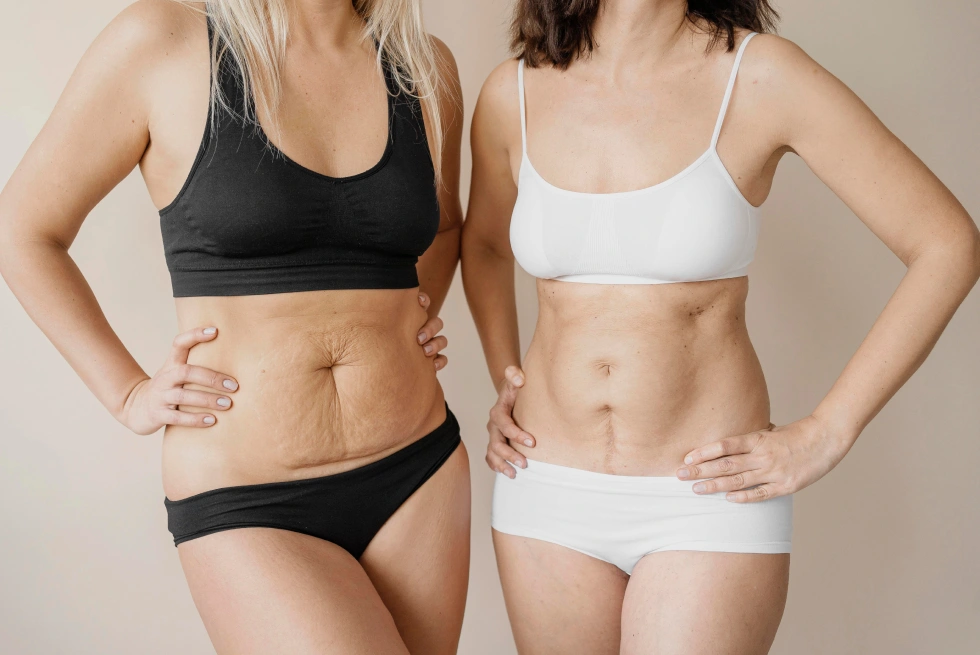A thigh lift is a transformative procedure designed to remove excess skin and fat, typically after weight loss or aging, providing smoother, firmer thighs. However, the success of a thigh lift isn’t just dependent on the surgery itself—it’s heavily influenced by the recovery process, particularly how you sit during the healing period. For many patients, the first few weeks after surgery can feel limiting, as sitting improperly can lead to complications, swelling, or discomfort. Proper sitting techniques, especially in the early recovery stages, are crucial for minimizing strain on the treated areas and ensuring optimal healing. While the importance of rest is commonly discussed, sitting posture is often overlooked. In this article, we’ll dive deep into the best ways to sit after a thigh lift, providing unique insights and practical tips for a smoother, faster recovery.
The First Few Days After Thigh Lift Surgery
The initial days following a thigh lift surgery are critical for your recovery, and how you sit during this period plays a pivotal role in achieving the best results. During this time, the body is adjusting to the changes made during surgery, and the treated areas are particularly vulnerable. Swelling and bruising are common, especially around the thighs, and it’s essential to avoid putting any direct pressure on the area to promote healing. Many patients experience tightness and discomfort, making it important to rest frequently, particularly in positions that do not put strain on the legs or thighs.
For the first few days, sitting directly on the thighs is discouraged. This is because the fat cells and skin are still settling into their new position, and pressure can displace them or cause unnecessary irritation. Lying down or reclining is recommended to avoid any weight bearing on the treated areas. Using pillows or cushions can help support your back and legs to maintain a more comfortable position.
In addition to avoiding pressure, this is also the time when you should be extremely cautious about any unnecessary movement. Gentle movements and a lot of rest are key. During the first few days, your body will be focusing on initial healing, and any strain could set back your recovery. Following post-operative instructions carefully during this stage sets the foundation for a smoother, quicker recovery process.
The Best Sitting Positions During Recovery
After a thigh lift, choosing the right sitting positions is one of the most important aspects of ensuring a smooth recovery. While it may be tempting to return to regular sitting habits, it’s essential to give the newly operated areas the proper care they need to heal. The best sitting positions during recovery are those that minimize pressure on the thighs and allow for proper blood circulation, especially in the first few weeks.
One of the most beneficial sitting positions during this period is reclining. By using pillows to elevate your legs, you can take the pressure off your thighs while allowing your body to heal. This position helps reduce swelling and encourages blood flow to the treated areas, promoting faster healing. It also helps minimize the strain on the incisions, which are still fragile during the early stages of recovery.
If you do need to sit for short periods, try to avoid sitting upright for extended periods. Instead, lean back slightly to distribute weight more evenly across your body and reduce pressure on the thighs. Consider using a specially designed cushion or pillow that provides support and keeps your body aligned. Sitting in a way that supports the natural curvature of your spine will also help reduce strain and discomfort.
It’s also important to avoid sitting with your legs crossed, as this can restrict blood flow to the legs and slow the healing process. Keeping your legs uncrossed and slightly elevated when sitting can support circulation and reduce the risk of complications during recovery.
Post-Thigh Lift Sitting Tips
Proper sitting techniques after a thigh lift can significantly impact the success of your recovery. The way you sit not only affects your comfort but also plays a crucial role in ensuring that the surgery’s results are not compromised. While it may seem like a minor detail, making adjustments to your sitting habits can help reduce swelling, avoid complications, and promote faster healing. Here are some unique tips that may not be commonly discussed, but can truly make a difference in your recovery.
- Use a reclining chair or adjustable lounge chair: These types of seating allow you to maintain a slightly elevated position, which can reduce pressure on your thighs. By reclining, you avoid direct contact with the treated area and help alleviate swelling.
- Sit on a soft, cushioned surface: If you must sit for any length of time, ensure you do so on a soft, supportive surface. A memory foam cushion or pillow can offer a good balance of comfort and pressure relief.
- Avoid sitting for extended periods: Try to stand and walk for short periods to improve circulation and avoid stiffness. Sitting for too long can cause fluid retention and slow down healing.
- Use leg elevation when seated: Whether you’re lying down or sitting, use pillows or cushions to elevate your legs. This helps reduce swelling and keeps pressure off the thighs, encouraging proper circulation.
- Keep posture in mind: When sitting, maintain an upright posture that does not place strain on your thighs or lower back. Sit with your feet flat on the floor, keeping your knees aligned with your hips to support your body’s natural structure.
By implementing these sitting tips, you can help ensure a more comfortable and effective recovery from your thigh lift surgery.
Activities to Avoid While Sitting
After a thigh lift, certain activities should be avoided while sitting to ensure proper healing and optimal results. The primary goal during the recovery phase is to minimize strain on the treated areas, which is why specific sitting habits can lead to complications if not managed carefully. One of the first things to avoid is sitting for prolonged periods without moving. Sitting for too long without getting up to walk or stretch can slow circulation, increase swelling, and even contribute to the formation of blood clots. Make sure to get up every 30 to 60 minutes, even if it’s just for a brief walk around the room.
Another common mistake is crossing your legs while sitting. Crossing your legs can restrict blood flow to the thighs, affecting the healing process. This simple habit can create pressure on the incisions, which may cause swelling or discomfort. Keeping your legs uncrossed and slightly elevated is the best option for supporting the healing tissues and promoting circulation.
Additionally, avoid leaning forward or slumping during sitting. These postures can strain the lower back and hips, which may inadvertently put pressure on the thighs. Instead, aim to sit with good posture, with your back straight and shoulders relaxed, to reduce unnecessary stress on your body. Lastly, refrain from sitting on hard, uncomfortable surfaces that could impact the delicate areas of your thighs during recovery. Opt for soft, supportive cushions to make your sitting experience more comfortable.
Conclusion
Proper sitting techniques after a thigh lift are essential for ensuring a smooth and successful recovery. By avoiding pressure on the treated areas, maintaining good posture, and following key recovery tips, you can significantly enhance your healing process and improve your results. If you have any questions about your recovery or are considering a thigh lift procedure, our team at RAM Plastic Surgery is here to guide you every step of the way. Visit us or call 312-337-3010 to schedule a consultation today.







